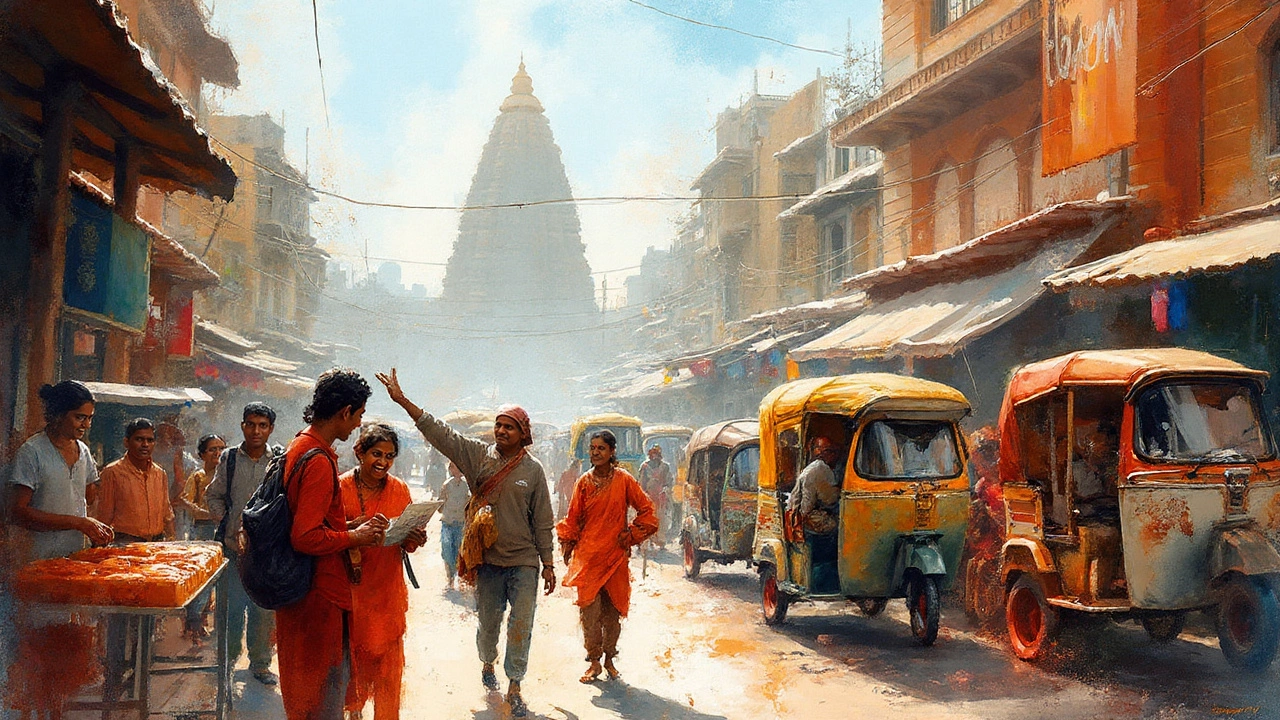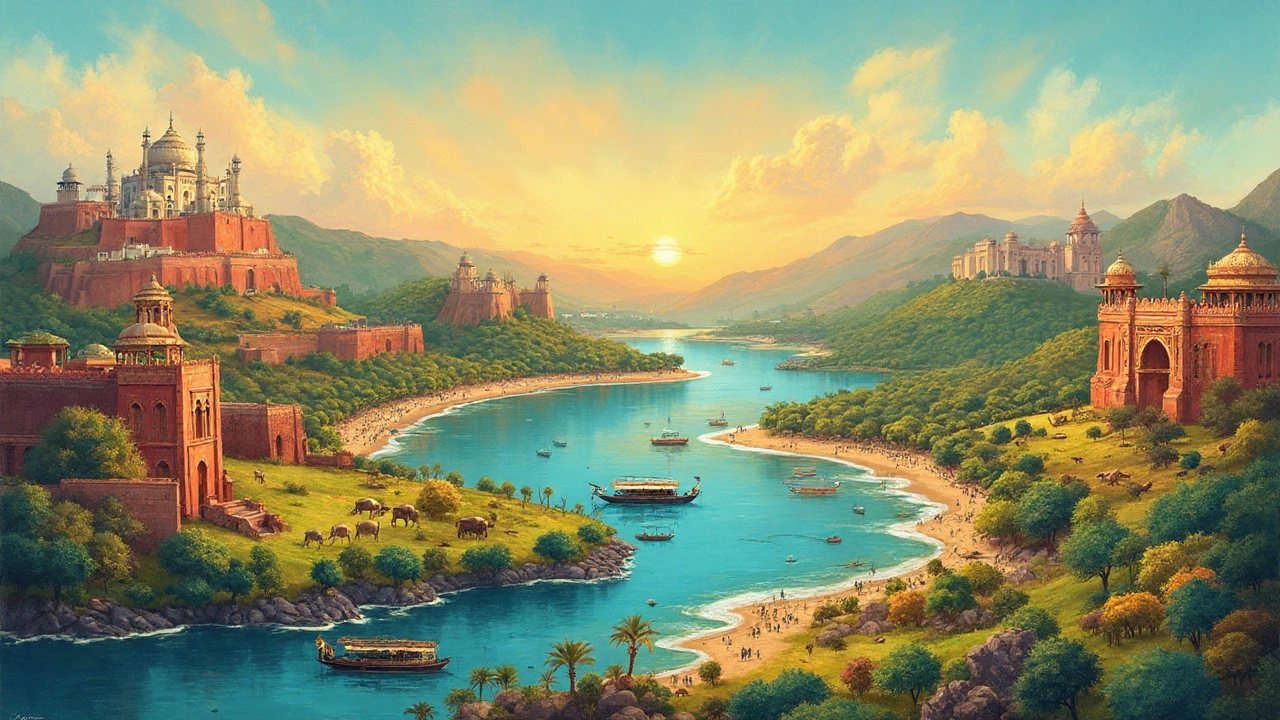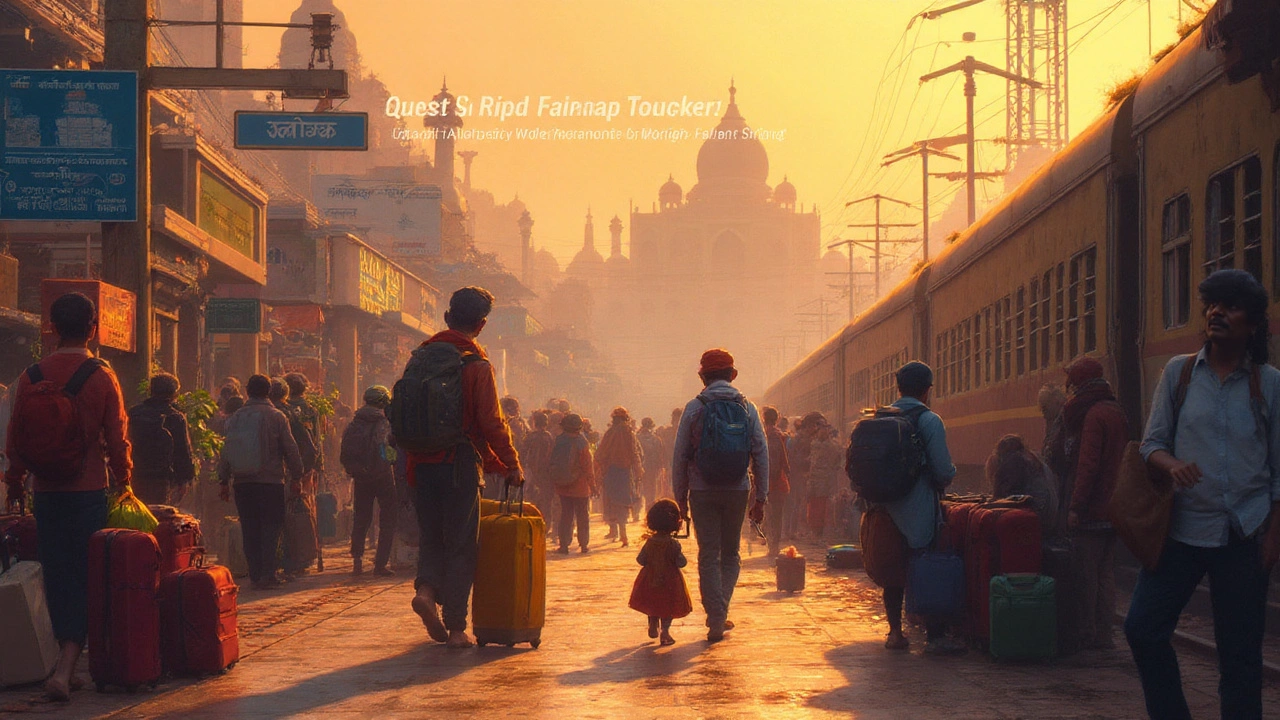Picture stepping onto a street that's a blur of colors, spices swirling in the air, rickshaws dodging cows, monks brushing past businessmen, forts looming beside glass towers. That sense of "Whoa, I'm really here" hits hard in India—it serves it up raw and real from the moment you arrive. You might've seen clips of Holi or Ganges ghats, but nothing quite matches the energy crash-landing in India gives you, especially for a first-timer.
Why Choosing the Right Route Matters for Your First Visit
So, where do you even start in a country the size of a continent? India's 29 states change flavor, language, and even breakfast every few hours by train. Go in without a plan and you might bounce between bucket-list landmarks and then burn out on sensory overload. Choosing a well-beaten path for a first trip keeps you sane and lets you actually appreciate what you're seeing rather than just surviving it.
The most popular (and let's be honest, practical) starting point for newbies is often the "Golden Triangle": Delhi, Agra, and Jaipur. Think of it as India's ultimate intro—palaces, street food, epic forts, dusty bazaars, and of course, the showstopper Taj Mahal. These cities form a manageable triangle, each leg about 4-6 hours apart by train or car, so you skip endless travel days. Plenty of solid hotels, English spoken widely, and a safety net of other tourists means you rarely feel lost, even at midnight under Delhi’s neon lights.
Why not start on a beach in Goa? Or in the coconut groves of Kerala? Sure, you can. India's south is made for slow travel: lush, better roads, famous for food, less crowds. But for most, nothing packs in so many "only in India" moments (think: fuchsia saris, snake charmers, massive Mughal forts, camel rides) as the Golden Triangle. It’s where Ansel, my kid, had his first daredevil street food taste and lived to tell about it, so I vouch for it.
If history’s your jam or you love ancient architecture, you won’t be disappointed. Delhi’s Red Fort, Jaipur’s Amber Palace, and Agra Fort offer a crash course in India’s wild backstory, from Mughal emperors to warrior queens. But travel can get sweaty—India has extremes in climate. Here’s a tip: the best time for the Golden Triangle is between late October and March. You’ll avoid the crushing summer heat (which can soar above 45°C—yep, that’s brutal), and the monsoon downpours. Be warned: December and January nights can get chilly, so a light jacket goes a long way.
If you’ve got more than a week, tack on Varanasi—the spiritual capital—or chill out in Udaipur’s dreamy lakes. But remember, less is more for your first trip. It’s easy to get ambitious with that map, but sometimes the most fun comes from people-watching over chai or haggling for bangles in a crowded street.
Essential Experiences for a First-Time Traveler
Picking your route is half the battle. The next step is making sure you put yourself in the heart of India’s best experiences—and believe me, the variety’s dizzying. If someone asked me what not to miss, I’d hand them this list:
- Stand under the shadow of the Taj Mahal at sunrise (it’s far less crowded, and the marble glows pink).
- Ride a cycle rickshaw through Old Delhi—it’s equal parts adrenaline and time travel.
- Try chaat (spicy street snacks) from a vendor with a crowd of locals. No crowds? Walk on. The busiest spots are usually safest and tastiest.
- Marvel at Jaipur’s Hawa Mahal and let your jaw drop at the intricate honeycomb windows.
- Step inside a Hindu temple during an evening aarti (prayer ceremony) and let the drums and chants sink in.
- Browse a bazaar for handmade textiles and chat up the shopkeeper—haggling is expected, and it’s half the fun.
- Visit a traditional haveli (merchant’s mansion) and see how marbled courtyards once echoed with royal footsteps.
- Watch monkeys steal fruit at Delhi’s Lodhi Gardens or Agra’s Mehtab Bagh across the Yamuna river.
Beyond sights and sounds, India is really about plunging in, not just peeking from a tour bus. Dance with strangers at a Holi color festival, join in a street cricket game, or take a cooking class with a local family. Even if you mess up the rotis, the stories you’ll earn either way are worth every flour-splattered shirt.
And even little things feel epic here. Riding second-class on an Indian train as chai vendors whirl down the aisle, or catching your first sunset over the desert in Jaipur. Pack an open mind; you’ll need it as much as any guidebook.
Here's a quick look at what most first-time travelers say were their biggest surprises and favorites, according to a 2024 survey by Indian Ministry of Tourism:
| Experience | Percent Who Loved It |
|---|---|
| Taj Mahal visit | 92% |
| Street food tasting | 86% |
| Bazaar shopping | 81% |
| Temple ceremony | 76% |
| Train journey | 82% |
Notice anything? All these moments happen if you just let India happen to you. No need for complicated checklists.

What Not to Expect: Common India Myths Busted
You can read as many Lonely Planet guides as you want. Still, a bunch of myths float around about seeing India for the first time—let’s bust a few. First up: “You’ll get sick.” Sure, there’s Delhi belly, but remember that your stomach might rebel anywhere. Stick to bottled water (even for brushing your teeth), avoid salads, peel your own fruit, and never (I mean never) eat anything that looks like it’s been sitting out. Oh, and go easy on the adventurous spice levels—if Ansel can handle it, you probably can too, but it’s okay to ask for "mild."
“It’s dangerous.” Like anywhere, pay attention, but don’t let scary headlines keep you from exploring. India’s cities can seem wild, but millions of families visit every year, many with kids in tow. Use common sense: don’t wander deserted alleys at night, avoid flashy jewelry, and use Uber or reputable taxis after dark.
“It’s only for hard-core backpackers.” Family travelers, honeymooners, solo women, and retirees all flock here now. Upscale hotels are booming even in small towns and Indian Railways now offers "Vistadome" luxury coaches in some routes—think glass-topped ceilings for panoramic views. You can build a trip that’s adventurous or as soft as you want it.
Another classic: "You won’t survive without Hindi." Wrong. English is everywhere, from menus to train signs. You’ll pick up a few key words fast—namaste (hello/goodbye) or kitna (how much) go a long way. But a smile and a willingness to listen are worth more than a phrasebook.
One more: “The air is unbreathably polluted everywhere.” Yes, Delhi and big cities do get those infamous smog days, especially in winter. Look at air quality indexes if you’re sensitive—tons of useful apps now alert you to bad spells, so pack a mask for precaution. But Udaipur, Kerala, or the Himalayan foothills? Fresh as your hometown park.
How to Make Your Trip Smooth: Practical Tips
The most magical trip can unravel with small misses—visa mix-ups, missed trains, or phone SIM headaches. But a few basics will rescue you from rookie mistakes. First, get your tourist e-visa sorted before you board your flight. Most nationalities can apply online now, and it’s approved in less than 72 hours if you’ve got your papers ready.
Book major trains in advance (tickets open 120 days prior) to avoid the chaos of “waiting list” stations—India’s railways can be fun, but they are in demand. Use the official IRCTC website (or its apps) or even foreigner tourist quotas to snap up tickets. If you’re flying between cities, low-cost airlines like IndiGo and SpiceJet run tons of cheap hops—just watch luggage limits.
Staying connected matters. Indian SIM cards are cheap, but you’ll need passport photocopies and a visa printout. Ask at the airport counters or major city Airtel/Vodafone shops—the registration process is a bit old-school and can eat up an hour, but you’ll thank yourself when you want to grab an Uber or translate a menu out in Jaipur somewhere.
Bring cash and a debit card. You’ll find plenty of ATMs, but smaller shops and street vendors still prefer cash—and always ask for change, shopkeepers love to hold onto the smaller bills. Credit cards are accepted in most hotels and upscale restaurants.
Dress: Women (and men) get less attention wearing long pants/skirts and shoulders covered, especially when visiting temples. But it’s not TV news everywhere—major cities are cosmopolitan, teens wear jeans and T-shirts, and no one blinks at sneakers. Temple visits? Take off your shoes (socks allowed sometimes) and watch for signs asking for head coverings.
Getting sick can ruin even the best itinerary. Bring some basic meds—antacids, diarrhea relief, ibuprofen. Carry hand sanitizer and tissues. And while we’re at it, don’t pet the street dogs (as tempting as it can be—Ansel begged every time); rabies shots and animal bites are a fast ticket to travel hell.
To keep up energy, start early—most sites brim with crowds from 10am onward, so beat the rush. Many monuments close on Mondays or Fridays, so always double-check timings. And leave room for flexibility: India will surprise you with unplanned processions, festivals, or traffic jams that turn into full-on street parties.

Packing the Best Memories: Suggestions for Every Kind of Traveler
Let’s be honest—no two first-timers do India alike. The gutsiest first-timers backpack by train, throw themselves into temple fairs, and embrace the madness. Others ease in with guides, book boutique hotels, and opt for quiet afternoons by palace pools. Both work. You don’t need to see everything. Think less about checking things off and more about collecting moments.
If you’re traveling with kids, big cities can be intense but full of fun—child-friendly hotels, sweet treats everywhere (try kulfi, Indian ice cream), kite-flying in Jaipur. Indian families adore kids, you’ll never run out of snacks or new friends at parks. Couples have endless romantic options—Udaipur’s lakeside dinners, rooftop cocktails over Jaipur’s pink skyline, or Kerala’s slow houseboats with lanterns swinging as the sun sets.
Lone travelers will find other soloists without even trying—trains and hostels are chat magnets. Women traveling alone should stay at trusted hotels and avoid quiet areas after dark but will likely meet friendly, helpful locals in every city; Indian women often strike up quick chats on trains and in queue lines.
Eco-conscious? Skip elephant rides or selfie-taking with animals (most are not well-treated). Instead, visit sanctuaries like Ranthambore for wild tigers or Bharatpur Bird Sanctuary for migratory birds. And consider offsetting your carbon: India now offers tree-planting options with some tour groups—a feel-good way to give back.
And whatever you do, give yourself days to wander: stroll through Jaipur’s blue pottery courtyard, let a Varanasi boatman steer you at dawn, lose your sense of schedule. India rewards curiosity, not checklist fever. The friendliest faces, wildest festivals, and best cups of chai turn up where you least expect them. And even when things seem upside-down, remember that half the world’s travelers fall hard for this chaotic, addictive, and completely unforgettable place. Just ask Ansel—he’s still asking when we’re going back.
